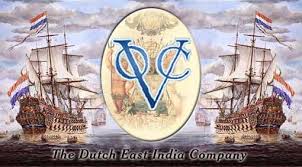By the 17th century, the Dutch Republic had become one of the most powerful trading nations in the world, controlling major trade routes across Europe, Asia, Africa, and the Americas. The creation of the Bank of Amsterdam (1609 CE) and its gold-backed receipts provided Dutch merchants with a more efficient and secure way to conduct international business.
Instead of carrying heavy gold or silver coins, traders could now use gold-backed paper money, which was widely accepted across major commercial hubs. This innovation helped the Dutch dominate global trade, expand the Dutch East India Company (VOC), and strengthen Amsterdam’s position as the financial center of Europe.

Why Did Dutch Merchants Prefer Gold-Backed Paper Money?
1. Safety & Convenience in Trade
- Carrying large amounts of gold or silver was risky due to piracy, theft, and war.
- Bank-issued gold-backed receipts allowed merchants to trade without physically transporting gold.
2. Faster & More Efficient Transactions
- Paper money simplified long-distance trade by removing the need to weigh and verify coins.
- Transactions between merchants, banks, and foreign traders became quicker and more reliable.
3. Trust in the Bank of Amsterdam
- The Bank of Amsterdam was highly respected, and its gold-backed receipts were trusted as real money.
- Even foreign traders accepted Dutch bank receipts as payment, making them useful in global trade.
✅ Result: Gold-backed receipts became just as valuable as gold coins, boosting Dutch trade efficiency.
How Dutch Merchants Used Gold-Backed Paper Money in Global Trade
A. European Trade
- Dutch merchants used gold-backed banknotes in France, England, Spain, and Germany.
- Amsterdam’s banking system allowed traders to convert paper money into gold at any time, making it a preferred currency for European merchants.
B. The Dutch East India Company (VOC) & Asian Trade
- The VOC, one of the world’s largest trading companies, used gold-backed banknotes to buy spices, tea, silk, and porcelain from Asia.
- Dutch traders could exchange banknotes for gold in key Asian trade hubs like Batavia (Indonesia), Malacca, and Nagasaki (Japan).
C. The Atlantic Trade & the Americas
- In the Caribbean and New Amsterdam (New York), Dutch merchants used gold-backed notes to finance the sugar and fur trade.
- Receipts from the Bank of Amsterdam were widely accepted by African and American traders, increasing Dutch influence in the Atlantic economy.
✅ Result: Dutch gold-backed paper money became a global trade currency, allowing merchants to conduct business in Europe, Asia, Africa, and the Americas.
The Impact of Gold-Backed Paper Money on Global Trade
1. The Rise of Amsterdam as the Financial Capital of Europe
- The success of Dutch banking made Amsterdam the leading financial center of the 17th century.
- The Dutch guilder (backed by gold) became one of the most stable and trusted currencies.
2. Increased Trade Efficiency & Growth
- Gold-backed banknotes reduced the reliance on physical gold, making global trade faster and safer.
- The VOC became the largest and most profitable trading company due to its ability to finance operations efficiently.
3. Influencing Future Banking Systems
- The success of gold-backed paper money in the Netherlands inspired other European nations, including England and France, to adopt similar banking systems.
- The concept of gold-backed banknotes led to the creation of the Bank of England (1694 CE) and later the Gold Standard.
✅ Result: The Dutch banking system helped create a global economy where paper money, backed by gold, was used in international trade.
Conclusion: The Dutch Pioneers of Gold-Backed Banking
The Dutch were the first to successfully implement gold-backed paper money in global trade, revolutionizing the way business was conducted across continents. By using gold-backed receipts instead of physical gold, Dutch merchants:
✅ Increased trade efficiency and security, reducing the risks of theft and fraud.
✅ Expanded the influence of the Dutch East India Company (VOC), making it the world’s most powerful trading company.
✅ Made Amsterdam the center of global finance, inspiring the development of modern banking.
The Dutch success with gold-backed banknotes would soon influence England, France, and other European powers, setting the stage for the rise of modern banking and the Gold Standard.
